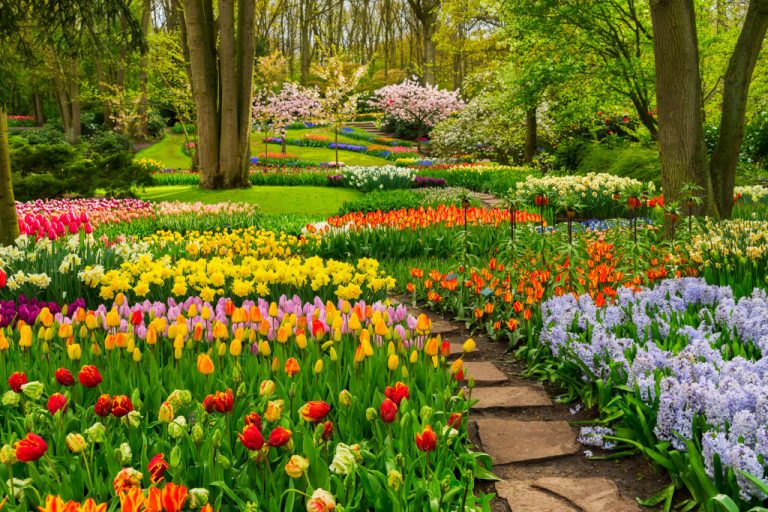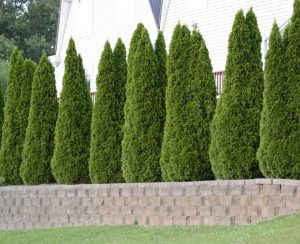- Start by choosing a design style that best suits your outdoor space.
- Plan the layout with trees, shrubs, pathways, structures, and decorative features in mind.
- Select plants based on size and color appropriate for your soil type.
- Consider maintenance requirements such as watering, fertilizing, pruning, and mowing.
- Add finishing touches such as birdbaths, seating arrangements, and lighting fixtures to complete your perfect outdoor space.
Creating the perfect outdoor space with landscaping can be a daunting task. With so many options and considerations, it may initially seem overwhelming. However, taking it one step at a time can make the entire process much more manageable. This article will walk you through everything you need to know to create your own perfect outdoor space with landscaping.
1. Choosing a Design Style
When planning your landscaping project, the first step is to decide on a design style that best suits your outdoor space and will bring out the most of its potential. Consider factors such as the shape of the area, existing features like trees or gardens, how much sun or shade there is in different parts of the area, and any restrictions or regulations about what kind of plants you can use for landscaping in your area. Once you’ve decided on a design style, you can move on to the next step.
2. Planning Your Layout

Once you know what kind of design style you want to use for your outdoor space, it’s time to start planning the layout. Consider factors such as the location of trees and shrubs, pathways or walkways that you may want to install, any structures like walls or patios that you’ll need for your design, and the position of decorative features like fountains or ponds. Make sure to consider any potential obstructions when planning so that you can be sure everything will fit together properly.
3. Choosing Plants
When selecting plants for your outdoor space, think about how they will work with each other in size and color. When selecting trees, consider their mature size and whether they are native species in your area. Also, consider what kind of soil your plants need and choose species that can thrive in it. For example, avoid species that need well-drained soil if you have clay-like soil. If you’re looking for plants attracting pollinators, choose native flowering species and plants with large heads of flowers.
4. Maintenance
When landscaping, think about how much time and effort you’re willing to put into the upkeep of your outdoor space. This will help you decide on the plants you choose and any additional features you may want to add.
Here are some factors to consider with the maintenance of your landscape:
Watering
On average, watering your plants and lawn once a week should be sufficient for most regions. However, if you’re in a drier area or have more sun exposure, then it might require more water to keep everything looking healthy. Consider the type of soil you have and how much moisture it can retain to determine how often you need to water.
Fertilizing

Plants can absorb nutrients from the soil, but some may require additional fertilizers for optimal growth. The type of fertilizer you’ll need depends on the plants in your landscape and their individual needs. Most fertilizer only needs to be applied once or twice a year, but follow the instructions for your specific plants.
Pruning
Trees and shrubs need regular pruning to look their best and remain healthy. Pruning helps to remove dead branches, promote new growth, and maintain an attractive shape. The frequency of pruning depends on the species, so it’s essential to research how often your specific trees and shrubs need to be pruned. If you find yourself overwhelmed, taking advantage of a professional tree service is a great way to ensure your trees are properly cared for. This will guarantee that they are pruned correctly and will save you time, energy, and money in the long run.
Mowing
Most lawns will require regular mowing to keep them looking tidy. The mowing frequency depends on your grass, but you should generally mow a lawn every week or two during the growing season. The ideal mowing height will depend on the grass type, but in general, it is best never to remove more than one-third of the total leaf blade at a time. Mowing too low can stress the grass and lead to diseases, weeds, and bare spots.
Weed Control
Weeds can be a nuisance in any landscape, so staying on top of weed control is essential. If weeds are left unchecked, they can quickly take over the garden and choke out other plants. There are various chemical and organic options for controlling weeds, so it’s best to do some research to determine the most effective method for your specific landscape.
5. Finishing Touches
Once all the hard work is done, it’s time for the finishing touches! Think about adding small decorative accents like birdbaths or another garden decor, and consider any seating arrangements you might want to put in place. You may even consider adding lighting fixtures for a truly unique outdoor living space.
When adding the perfect accent pieces, there are a few things to remember. Think about how they’ll fit into your yard’s overall design and color scheme. You don’t want items that detract from the natural beauty of your garden or yard. If you choose seating arrangements, make sure it’s comfortable and able to withstand the elements. Lighting can also add a romantic or whimsical feel to your space, but only if you choose the correct type of fixture for outdoor use.
In Summary
Creating the perfect outdoor space with landscaping is a task that requires careful planning and consideration. Your landscape design should reflect your individual style while also considering factors such as size, location, soil type, and maintenance requirements. With these tips in mind, you’re sure to create a unique outdoor oasis that your family will enjoy for years to come.











